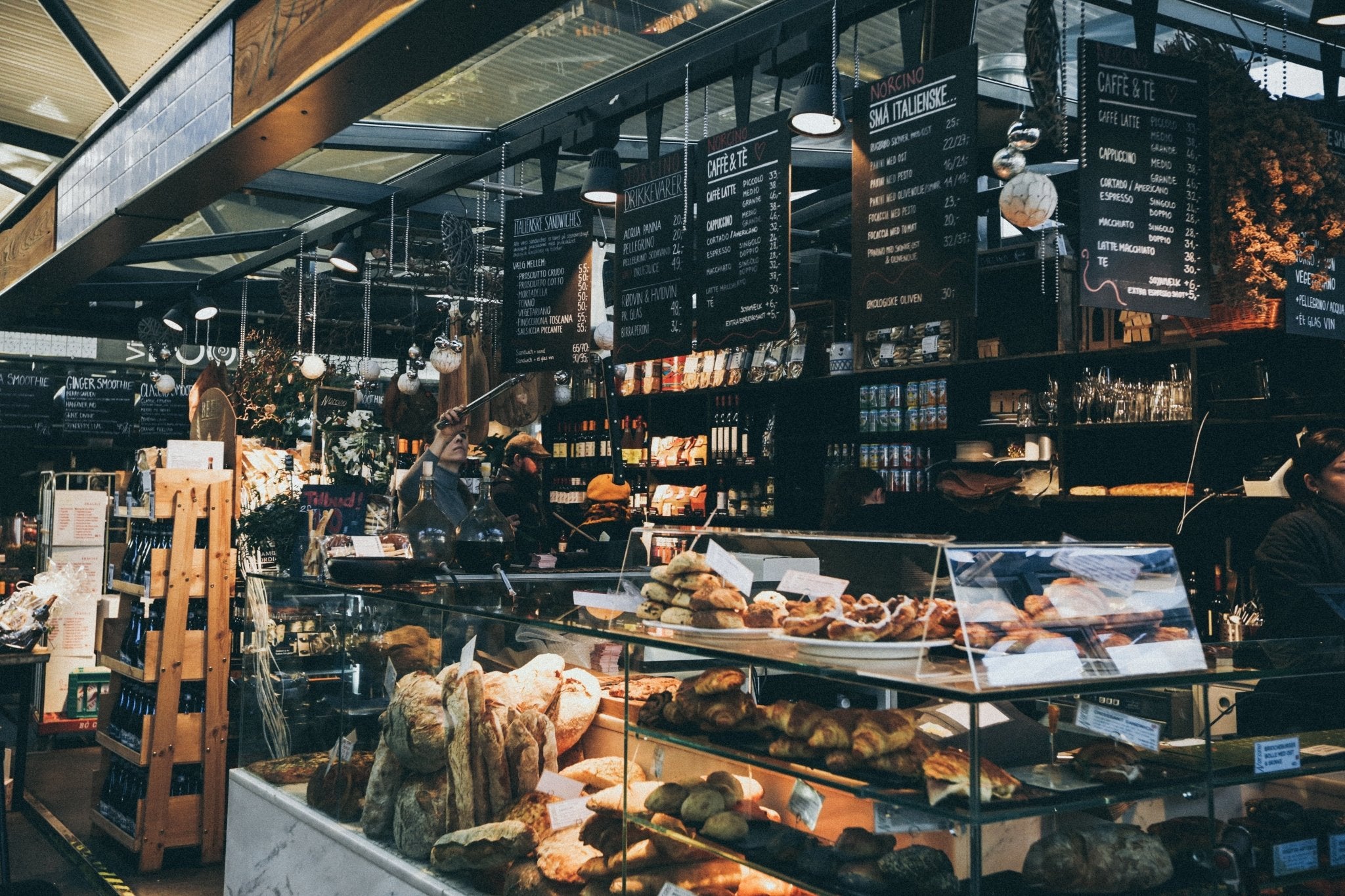Decoding Professional Kitchens: The Pâtissier Station

In our previous blog on Decoding Professional Kitchens, we took a deep dive into the Entremetier Station, mainly responsible for handling, preparing, and cooking all vegetable and soup menu items. This week we'll be taking a closer look into the most unique station in the brigade system, and the station responsible for cooking and preparing all sweet menu items and desserts, commonly referred to as the Pâtissier Station.
The Pâtissier plays an extremely crucial role in the brigade system, effectively being the last act of a play-performance that has included the acting of all the other Brigade System chefs. Being the station that closes the curtain and leaves the final impression on a customer, the Pâtissier must be able to consistently provide high quality dishes to leave a lasting positive impression of the restaurant.
The word "Pâtissier" means "Pastry Chef" in French and the station is, as the name suggests, primarily responsible for baking sweets and desserts. In modern kitchens, the responsibilities of the Pâtissier may extend beyond what its definition implies. In most kitchens, the modern Pâtissier also holds the responsibility of baking breads and pasta for service. While this may not be common in most high tier restaurants, as the process of producing freshly baked bread and pasta can be time-inefficient during service, it is still expected of the modern Pâtissier to be able to perform those skills.

Expertise in Ingredients
Since the stations primary responsibility is preparing and baking sweets and desserts to serve, it is essential for a Pâtissier to have an in-depth understanding of the different dessert dishes provided by top tier restaurants and how to expertly prepare them. The three most common dessert items served across all restaurants are cake, pie, pudding, and mousse.
Alongside expertise in cooking these four common dishes, the Pâtissier must also be familiar with less common and more modern desserts that restaurants may want to include, such as ice-creams and doughnuts. Alongside general baking ingredients such as flour, milk, sugar, and eggs, Pâtissiers also need to have a good understanding of fruits, vegetables, and cheese as those ingredients are the base of many popular dessert items such as tarts and cakes.
Knowing about the ingredients of these desserts is quite straightforward compared to baking the menu item. When it comes to variety in applicable knowledge, no other station can top the Pâtissier. This can be particularly true for cakes and puddings. While baking a cake may be a straightforward operation, different kinds of high-end cakes require vastly different methods of preparation. An experienced Pâtissier will not prepare carrot and fruitcakes the same way they would a cheesecake for example.

Other Challenges
Most classical brigade system stations face many challenges, however very few must worry about the variety in temperature of the food they are serving. Stations such as the Rotisseur only have to worry about grilling, roasting, and cooking their ingredients in high temperatures, while the Garde Manger station only takes care of cold appetizers.
This is not the case for the Pâtissier station, the variety in dessert preparation means the Pâtissier will have to prepare both hot and cold dishes. Items such as pies must be served hot, while cakes are generally served cold. This means that time management is absolutely critical for a Pâtissier in order to get the desserts freshly served to the customer.

Tools of the Trade
Pâtissiers use a wide array of different tools to cook their desserts and baked goods. While knives generally don't take up a large portion of their arsenal, all Pâtissiers generally use an all-purpose knife to cut through general ingredients.
When it comes to knives, the Pâtissier station generally uses Santoku and Chef knives (approximately 7-inches and 8-inches in length). The Santoku is an all-purpose knife that is used by Pâtissiers throughout their working day, which when translated to English from Japanese, means "three virtues". This is an homage given to the blades impeccable ability to cut fish, meat, and vegetables. This all-purpose knife features a flat body with a slight curve which allows for an extremely smooth chopping motion.
If you are looking for great knives to up your game, Chef Sac has recently collaborated with Der Säbel to launch a 7-inch Santoku Knife and an 8-inch Chef Knife, ice hardened and made from premium German steel.

Other hand-held tools commonly used by Pâtissier include:
- Whisks
- Mixing Bowls
- Cooling Racks
- Rolling Pins
- Wooden Spoons
- Spatulas
Whisks are primarily used for mixing wet ingredients in mixing bowls, while spatulas and wooden spoons are used to create mixtures and batters. Rolling pins are used for flattening out the dough, with cooling racks used to cool off baked items.

The Pâtissier's best friend is the oven, with most of the operations requiring its use in some form.
While many skilled Pâtissiers opt to use their intuition and experience for ensuring the pastry is baked at the desired level, cooking thermometers are standard across all kitchens as they ensure uniform consistency in the final product.
A popularly Chef Sac product amongst Pâtissiers is the Chef Knife Case Bag which easily 20 culinary tools like knives, spatulas, wooden spoons, zesters, and more. The padded shoulder strap makes it easy to carry from home to the kitchen, demos, and private events.

Service Time
During service, the Pâtissier is fully responsible for all baked and dessert-based menu items. This puts the station in an unique position as it will have to coordinate and communicate with other stations in order to plan out a timeline for preparing fresh dessert for the customer.
While the Pâtissier may be in charge of preparing and baking dessert items, the station must coordinate with other line cooks in the brigade system in order to bring the final product to the customer's table. The Pâtissier must co-ordinate well with the Rotisseur (station in charge of cooking meats) and Poissonnier (station in charge of making fish) as these stations are responsible for the main course which is followed by desserts in the traditional serving process.

Wrapping Up
While the Pâtissier is considered a very traditional and old-school brigade system station, the commonality of this station in modern kitchens becomes less and less as newer and more innovative ways appear for preparing dessert pre-service, making it ready to be served in a matter of minutes from the time of order.
While this means the dessert served is not fresh anymore by definition, it is extremely efficient for operating restaurants, with some even outsourcing their dessert selection from smaller bakeries at a discount due to the high and consistent order volume.

Desserts are the cherry on top of all great restaurant experiences, and while most people may forget the taste of the appetizer, or even the main dish at the restaurant, a great dessert is what truly brings amazing long-lasting memories of the restaurant and eating experience for the average customer.

If you are aspiring to become a Pâtissier, you must be determined to master all areas associated with delivering the food to the customer. The number one deciding factor of success for all chefs is a drive to learn more and improve their skills on a daily basis, and this is no different for the pastry cook. On top of all the knowledge a Pâtissier must have regarding their niche, a general overview and understanding of all stations is also essential.
Whether you're a dessert enthusiast trying to find a career on the kitchen floor, a culinary student aiming to become a pâtissier, or a seasoned pastry chef always looking to take your game to the next level, Chef Sac is rooting for you, and we'll always have your back.
- Tags: #Baker essential tools #Chef bags #Chef Essential Tools #Essential Chef Bag Tools #Kitchen essential tools #Kitchen Knives bag for baking bag for chefs baking baking bags baking tools Chef bag Chef de Cuisine chef essentials chef gifts chef tools Chefs chefs gifts culinary school culinary student gifts culinary students Entremetier Station Executive Chef gift ideas gifts for culinary students kitchen bag kitchen gifts Knife bag Pastry Chefs Pâtissier Station Santoku Knife Sous Chef Stagiaire Station Chefs types of chef
2 comments
-
Jaime Reyes on
Hi
Looking for a pastry chef bag
Do you guys have any?
I see more for the culinary side.



Very resourceful and Enriching. Any aspiring chef especially young chef need this knowledge and information if they are to succeed in todays industry.